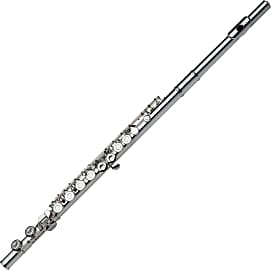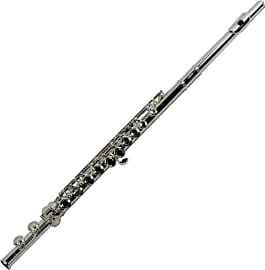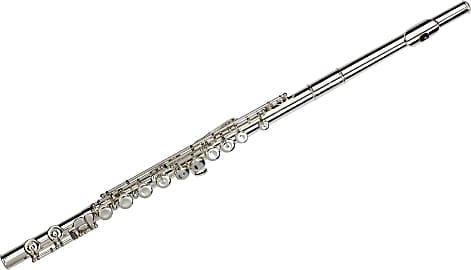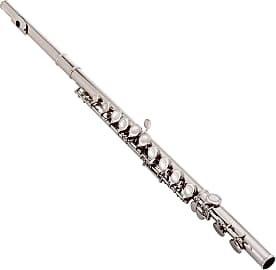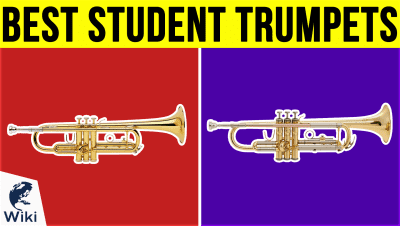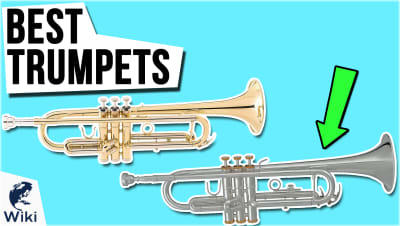The 8 Best Student Flutes

This wiki has been updated 36 times since it was first published in October of 2016. If you’re looking for a new or replacement instrument, perhaps for a budding musician in your family, something from our selection of flutes should fit the bill nicely. Each is designed to be easy to hold and play, which helps students transition from beginner to accomplished performer. While a good model isn't cheap, we've focused on quality options from reputable manufacturers. When users buy our independently chosen editorial selections, we may earn commissions to help fund the Wiki.
Editor's Notes
April 02, 2020:
Flutes are precision-made instruments, so it's important to understand that you can't just pay as little as possible for one and expect to get a working and long-lasting unit. The Jean Paul FL-220 is one of the least expensive options that's actually more than a toy, although once a student reaches even moderate proficiency, you'll probably want to upgrade. The Gemeinhardt 1SP will last a bit longer than the Jean Paul, and its more finely made cousin the Gemeinhardt 2SP even longer. But all three of those may present issues for intermediate players.
More recognizable brands tend to have more at stake when it comes to producing reliable instruments, and Conn-Selmer's Prelude FL711 is a good example of that. It's relatively affordable but still a passable instrument that many band leaders approve of. The Pearl PF500 comes from a Japanese company that makes flutes and only flutes, and it incorporates some design elements that are usually reserved for high-end models. And while Jupiter's woodwinds weren't always highly respected in the past, that's changed in recent years; the Jupiter 511S is very much a quality flute, and provides another mid-range option for those who don't want to break the bank.
That said, there are a few models that are clearly superior, although they tend to cost a little more. The Yamaha YFL-222 is the perfect example of a tried-and-true design that promises to satisfy students and teachers alike. It, along with the Armstrong 104, not only make great beginner instruments, but can easily serve in the transition to more serious playing with the addition of a high-end head joint, which is one of the most important parts of the flute. In all honesty, the vast majority of what Yamaha makes is of very good quality, whether you're looking at a beginner or high-end trumpet, a baritone horn, a saxophone, a french horn, or especially a keyboard.
Special Honors
Woodwind Brasswind Catalog This is one of the most popular catalogs for purchasing beginner and intermediate instruments. In fact, if you can find a model in their selection, there's a very good chance it's of a high quality, unlike many ultra-cheap imported models. wwbw.com
Sam Ash Music As a nationwide retailer of high-quality goods, you can be certain that the folks at Sam Ash take good care of their used instruments, so anything purchased on consignment, as many of these are, should be ready to play as soon as you receive it. They accept all kinds of models as trade-ins as well. samashmusic.com
Gina's Flutes Based in Colorado, Gina and her staff take great care of a wide range of band instruments in addition to just flutes, and resell their used items at very reasonable prices. Don't worry if you're located far away, though, because they'll send you exactly what you order for a nominal shipping fee. ginasflutes.com
Why Every Child Should Learn To Play An Instrument
When he hears the reward of that one song finally coming out correctly, he's encouraged to pursue his next short-term goal.
If you have children, then you know at some point during their elementary school years, you can count on the jarring but also endearing sound of them learning to play the recorder — a kind of flute — wafting through the halls of your home. Learning to play the recorder is mandatory in many elementary schools across America. This is because school administrators understand the benefits that come from learning to play an instrument. The flute became the instrument of choice typically because it is small enough to be manipulated by the hands of a child. As a wind instrument, it relies simply on the player's breath, rather than the vibration of certain materials coming together, making it relatively easy for a child to learn to play. The flutes on our list are not recorders, but rather what are called transverse flutes, which are a natural step forward in your child's musical education.
Studies have found that musicians have a better memory than non-musicians. Considering that children in elementary school are at an age when they're taking in a tremendous amount of information that will form the foundation of their education and higher learning, any activity that improves their ability to create and store memories is very important. Learning to play an instrument can help teach a child to have more patience, as well, which is not a trait most young children are known for. It also allows a child to set short-term goals for himself and experience the joy of accomplishment. When he hears the reward of that one song finally coming out correctly, he's encouraged to pursue his next short-term goal.
Playing an instrument improves one's hand-eye coordination tremendously, too. If your little one is constantly knocking items over and bumping into things around your home, perhaps learning to play an instrument can put an end to this clumsiness. On the topic of childhood carelessness, playing an instrument also instills a sense of responsibility in kids. They learn they need to take good care of their instrument, cleaning it and storing it properly, if they're going to get to continue to play it. Of course, kids can sometimes still make mistakes, which is why the flute is a particularly good first instrument for little ones. Since it costs less than many other instruments, it isn't quite as devastating if a child drops or loses it.
What To Look For In A Student Flute
If your kid is reluctant to pick up the flute at all, you may want to find him one in a bright color to draw him in. Regardless of his interest level, make sure his flute is lightweight, since your little one probably cannot support a hefty instrument for now. Flutes with drawn tone holes can be a good choice for kids because they are naturally a little lighter than those with soldered tone holes. These also offer a quicker response and less resistance, which are traits impatient children will appreciate. A student who is new to this instrument may also benefit from clear footjoint markings.
These also offer a quicker response and less resistance, which are traits impatient children will appreciate.
Since children are often rushing around and not always paying attention to their surroundings, it would be a good idea to look for a flute that is chip resistant. If your child's flute comes with a padded carrying case, even better. You don't want his flute knocking up against his pencils and books inside of his backpack. Some even come with cleaning supplies, which will start your child off on the right foot in terms of caring for his instrument. If, however, you know your kid probably won't get around to cleaning his flute, look for one made of ABS plastic, so you can quickly clean it with simple soap and water for him.
If your child takes his flute-playing seriously, there are a few recital-ready features you should look for, like a lovely nickel-plated finish or a sophisticated silver finish. These ensure it will look nice when they are on stage. Depending on your child's experience level, you may want a flute with a very sensitive response for beginners or a little more resistance for advanced players.
The History Of The Flute
The flute is actually one of the first confirmed discoveries of an instrument in human history. In 2008, researchers found a vulture bone that had five holes drilled into it and a V-shaped carved mouthpiece in Ulm, Germany, that they date back to around 35,000 years ago. Historians also found several other versions of flutes in the same cave where they found the vulture bone. These were made from various other animal bones and in several different shapes, suggesting that the nearby town had a rich music culture. There was also a discovery of a flute dating back to 433 B.C.E in the Hubei province in China, which historians believe belonged to the Zhou Dynasty. This flute was made from bamboo and was called a chi.
This is when composers like Bach and Handel began creating pieces for the instrument.
Flutes have long been an integral part of social celebrations and culture. In the 1100s and 1200s, the instrument was predominantly used in courtly music and in the military, but in the 1300s, the Swiss made it popular with the masses. Wealthy families during the Renaissance would hire groups of flute players to entertain them in their homes, while the 1600s and 1700s saw the emergence of the solo flute player. This is when composers like Bach and Handel began creating pieces for the instrument. A few renowned traveling flute players popped up then, too, like J.J. Quantz who made a living performing at concerts in different countries.
The design of the flute was constantly changing as humans sought to improve its tonal range. By the 1900s, nearly every country had its own version with a different number of holes, position of holes, length of the instrument, and more. Around this time, Theobald Boehm of Bavaria came out with a flute that allowed for a more comfortable hand position than most previous versions. This would come to be known as the Vienna style flute, which is still very popular today.




